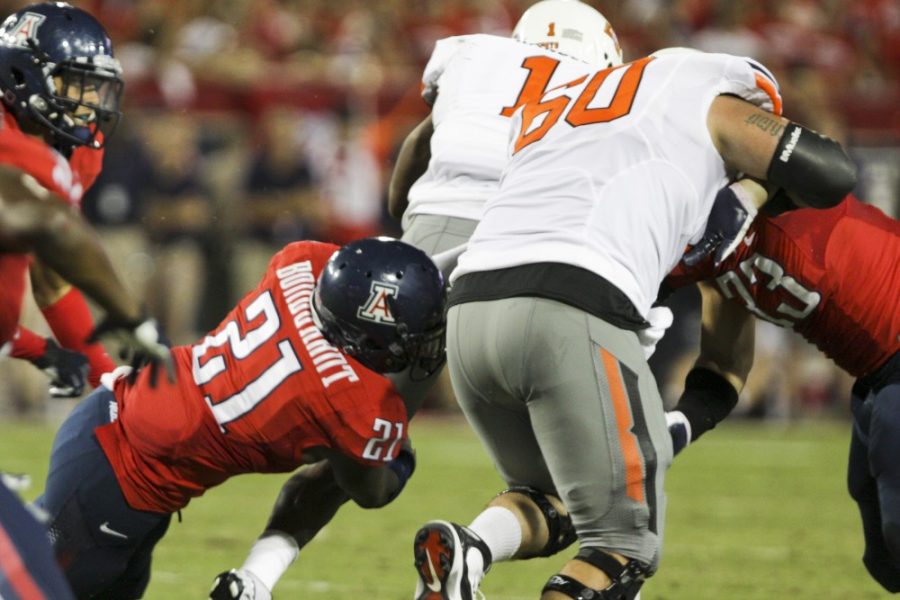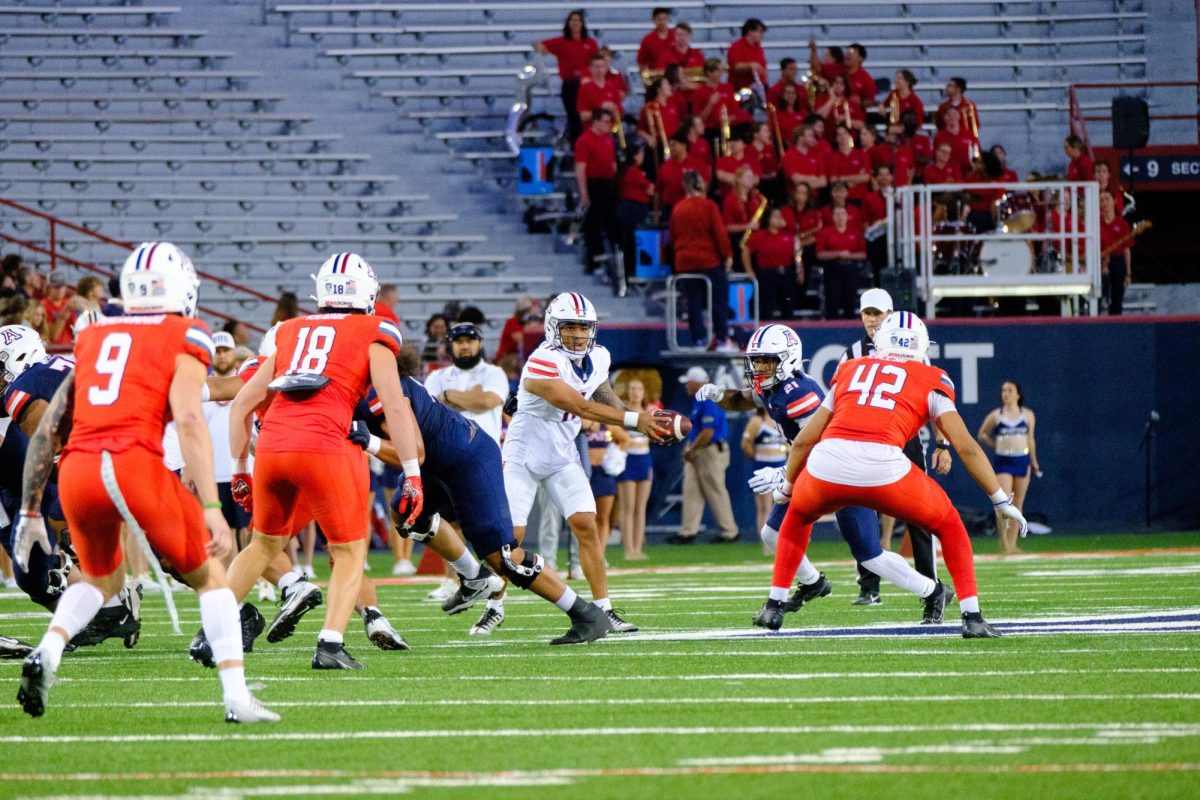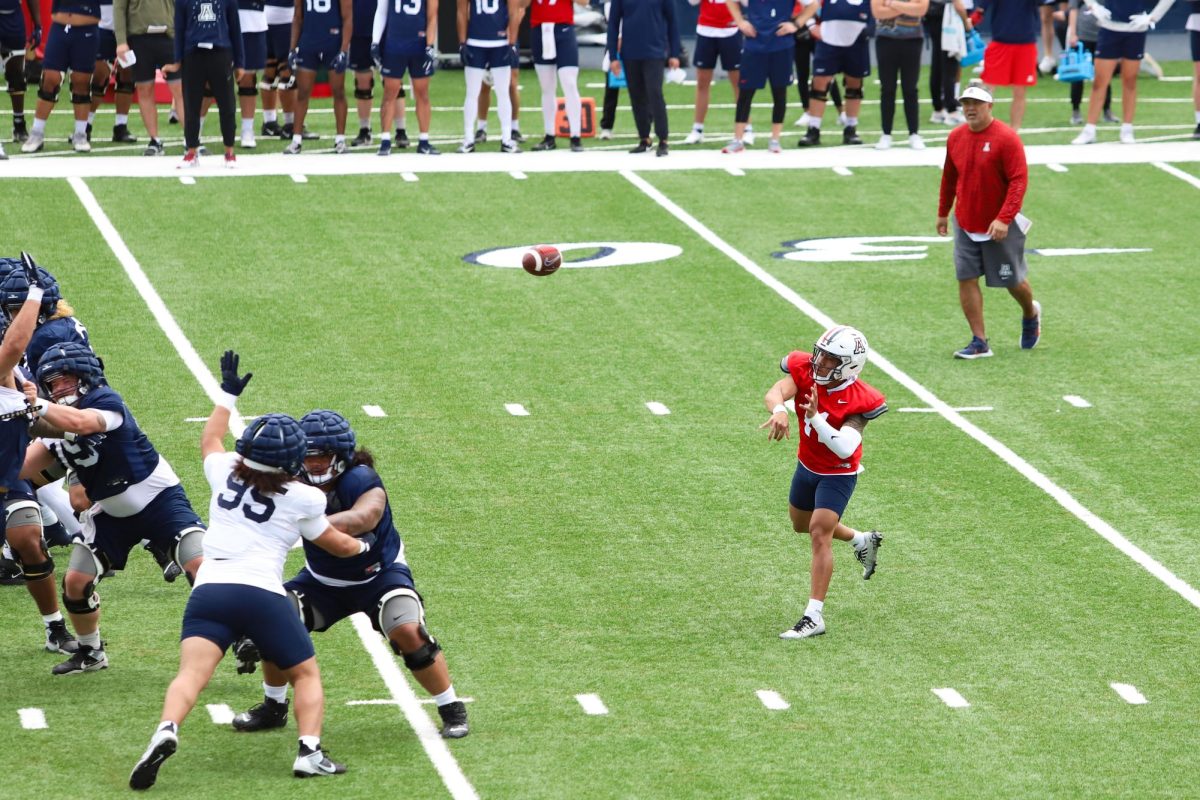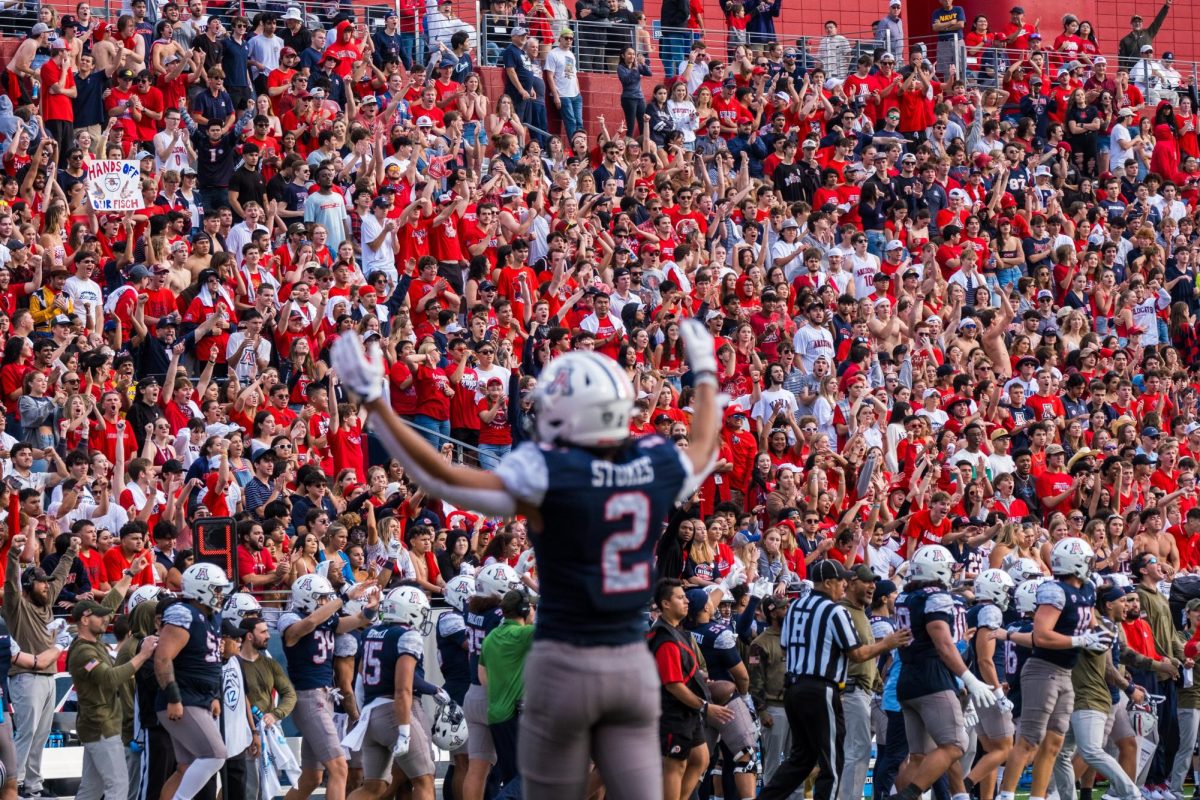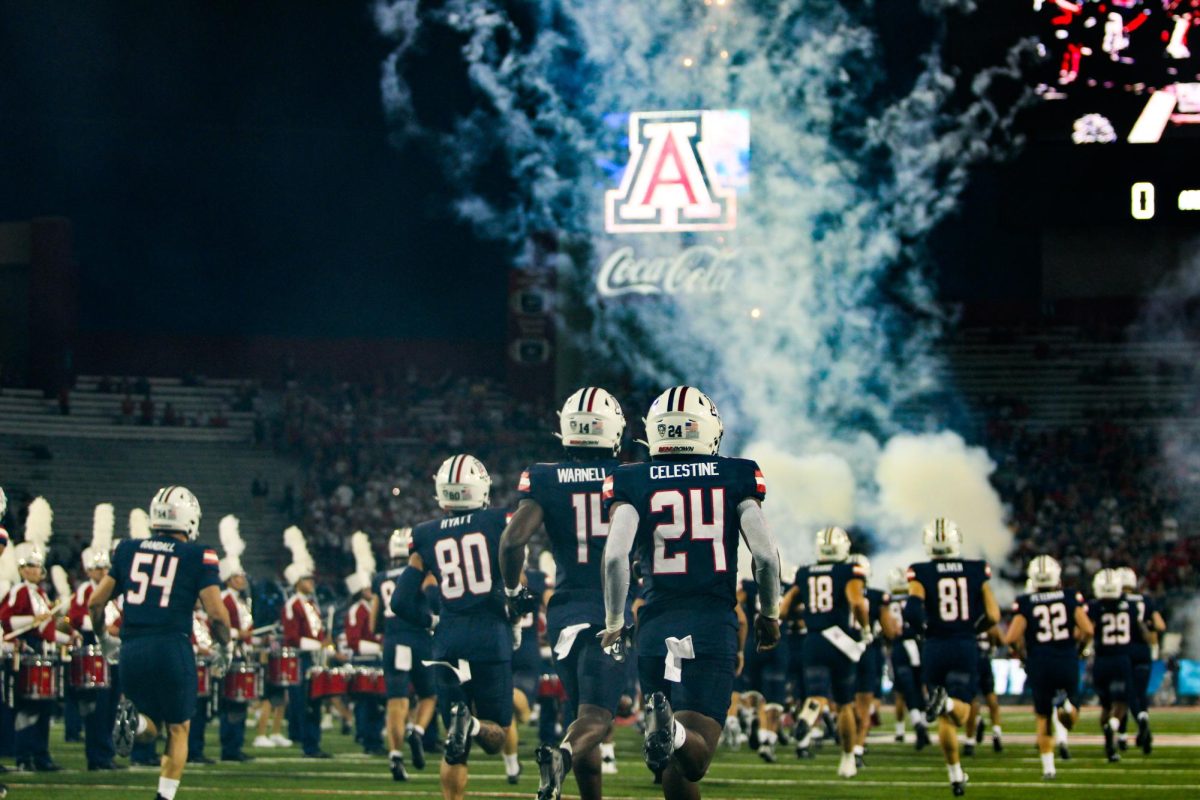Arizona’s defensive scheme, the 3-3-5 “odd stack,” has matched up well with the primarily spread-based offenses it has seen so far this season.
But the Wildcats’ defense has an entirely new challenge on its plate Saturday as the UA heads to Palo Alto, Calif., to take on the big boys at No. 18 Stanford at 12 p.m. on Saturday at Stanford Stadium.
“This might be the biggest team in college football,” head coach Rich Rodriguez said.
With the size of Stanford, as well as its traditional power set, the UA system which defensive coordinator Jeff Casteel implemented will face new defensive issues on Saturday.
Even though the 3-3-5 “odd stack” is, in essence, a twist on the common 3-4 defense, the lack of a fourth linebacker puts Arizona at a major size disadvantage. And that’s without taking into account the overall lack of size on the Arizona roster.
According to Casteel, the Wildcats won’t make any big changes with personnel, but stylistic adjustments are necessary.
“The style of play changes and we have to change with the style of play,” Casteel said. “[Just] do what we got to try to do to win the football game.”
Stanford’s power set implements a variety of power-I formations, such as three tight end sets.
This allows the Cardinal to pound the ball and play hard-nose football, a throwback to how football was played before spread offenses took over.
“In the power set three to four yards is really big because they’re just going to come back and power again, three to four yards, three to four yards,” linebacker Marquis Flowers said.
“It softens defenses up, but our mentality got to be, we’ve got to go body for body. We’ve got to hit.”
Going body for body isn’t an easy task when a tight end the size of Levine Toilolo catches the ball in the open field — the junior is 6 foot 8 inches and 265 pounds.
“It’s the same way if I told you all to eat an elephant — one bit at a time, right?” Rodriguez said.
“So we might be like a bunch of fire ants jumping all over those guys,” he added. “It might take five or six of them, so the first guy to get there hit him as hard as you can and hold on for dear life, and hope the cavalry comes to help you out.”
The size isn’t just limited to tight ends though, as running back Stepfan Taylor is one of the best running backs in the Pac-12 with at least 300 yards.
In large part because of its size, Stanford isn’t the most explosive team in the conference.
Stanford’s yards per play average is ninth in the Pac-12, as the Cardinal gains roughly five yards each play. Stanford is also ranked 105th in the nation in total offense.
The lack of big play potential comes as a big relief for an Arizona defense that’s keen on giving up large chunks of yardage. On average the Wildcats give up 5.4 yards every single play, placing them eighth in the Pac-12.
“They’re nasty up front,” linebacker Jake Fischer said. “But I think our guys are up for the challenge.”



